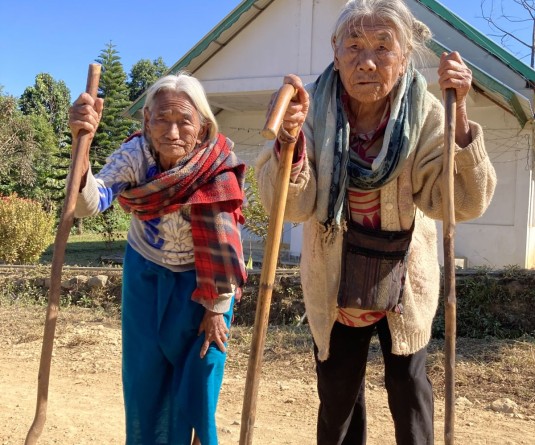
Ketho Angami
President, ARK (Access to Rights and Knowledge) Foundation
What is Tuberculosis?
Tuberculosis, commonly known as TB, is a disease that most commonly affects the lungs caused by a bacteria, called Mycobacterium tuberculosis (MTB). It is transmitted through the air when someone who is infected with TB coughs, sneezes, shouts, or sings. During such times tiny droplets of saliva containing thousands of TB bacilli get floated in the air and once inhaled, the droplets push their way into the lungs, settling in tiny air sacs (alveoli).
TB is NOT spread through touch, clothes, blood, sperm, vaginal fluids, food or liquids, sharing utensils, dust, dirt, or vehicle fumes.
What is LTBI?
“Latent Tuberculosis Infection (LTBI) is defined as a state of persistent immune response to stimulation by Mycobacterium tuberculosis antigens with no evidence of clinically manifest active TB.” This means that anyone can be infected with TB but remain in the LTBI stage without getting sick from active TB. However, Latent TB infection can progress to active disease when the body becomes weak, for example from disease, malnutrition, immune suppression, or advanced age. In people living with HIV, without good HIV treatment, the immune system becomes compromised and thus the person becomes more vulnerable to the progression of LTBI into active TB. As a result, there is a huge number of people affected by both HIV and TB
There is a difference between TB infection and TB disease. During the stage of LTBI, the immune system is successful in containing TB and preventing disease. The TB bacilli remain encased in a hard shell, called a tubercle. Active TB disease refers to the time when TB is no longer contained by the immune system and causes disease.
However, people can also progress directly to developing active disease without having a long latent period.
What is Tuberculosis Preventive Therapy or TPT?
LTBI is treatable through Tuberculosis prevention Treatment or TPT. It is a treatment for preventing tuberculosis. It includes the administration of one or more anti-tuberculosis medicines for a certain duration. This treatment is given to only those Household contacts who may have been exposed to the TB bacteria, and those who have low immunity due to existing conditions such as affected by HIV, diabetes, or silicosis, so as to prevent TB before it turns into a state of Disease thereby making people sick.
The World Health Organisation indicates that isoniazid is the most widely used TPT regimen in the world; this is sometimes referred to as IPT, or isoniazid preventive therapy. Rifampicin and Rifapentine are the other two drugs that are important parts of TPT. When combined with isoniazid, rifampicin and rifapentine form so-called short-course TPT regimens that prevent TB in less time and with fewer side effects than the longer IPT regimen. Of these short-course regimens, the most commonly used is a 12-week regimen of rifapentine-isoniazid called 3HP.
However, 3HP is still not widely available under the TB program in India.
In the absence of a broadly effective vaccine, preventive therapy is extremely important in TB prevention. Currently, WHO recommends preventive therapy in all:Childhood household contacts (under 5 years) of someone diagnosed with active TB disease, People with HIV as long as active TB disease has been ruled out
The most common form of preventive therapy is Isoniazid Preventive Therapy (IPT)
The WHO recommends one of the following treatment regimens forlatent TB infectionbased on drug sensitivity, drug availability, and TB incidence and prevalence:
• 6-month isoniazid (daily)*
• 9-month isoniazid (daily)
• 3-month rifapentine + isoniazid (weekly)
• 1-month of rifapentine+ isoniazid (daily)
• 3-4 months isoniazid + rifampicin (daily)
• 4 months rifampicin (daily), recommended for people who cannot tolerate or whose TB is resistant to isoniazid
Note: none of these regimens would work on drug-resistant strains. Research is underway to see if levofloxacin or delamanid are good options for contacts of people with MDR-TB.
Treating active TB disease quickly is the best way to prevent TB. There are many ways to prevent TB—none perfect—so we need to use them all
• BCG vaccine protects children against the worst forms of TB
• Preventive therapy is very important for contacts of people with TB
• Early detection and treatment of TB and HIV is the best way to prevent TB transmission
• For TB-negative people, wearing an N-95 respirator (N-95 mask)
• For persons with TB, wearing a surgical mask when coughing may reduce the spread of TB in the first weeks of treatment, but this should not be a requirement and could increase stigma.
• Improved air quality and living conditions (avoid overcrowding)
• Healthy nutrition (both malnutrition and diabetes predispose people to develop active TB)




